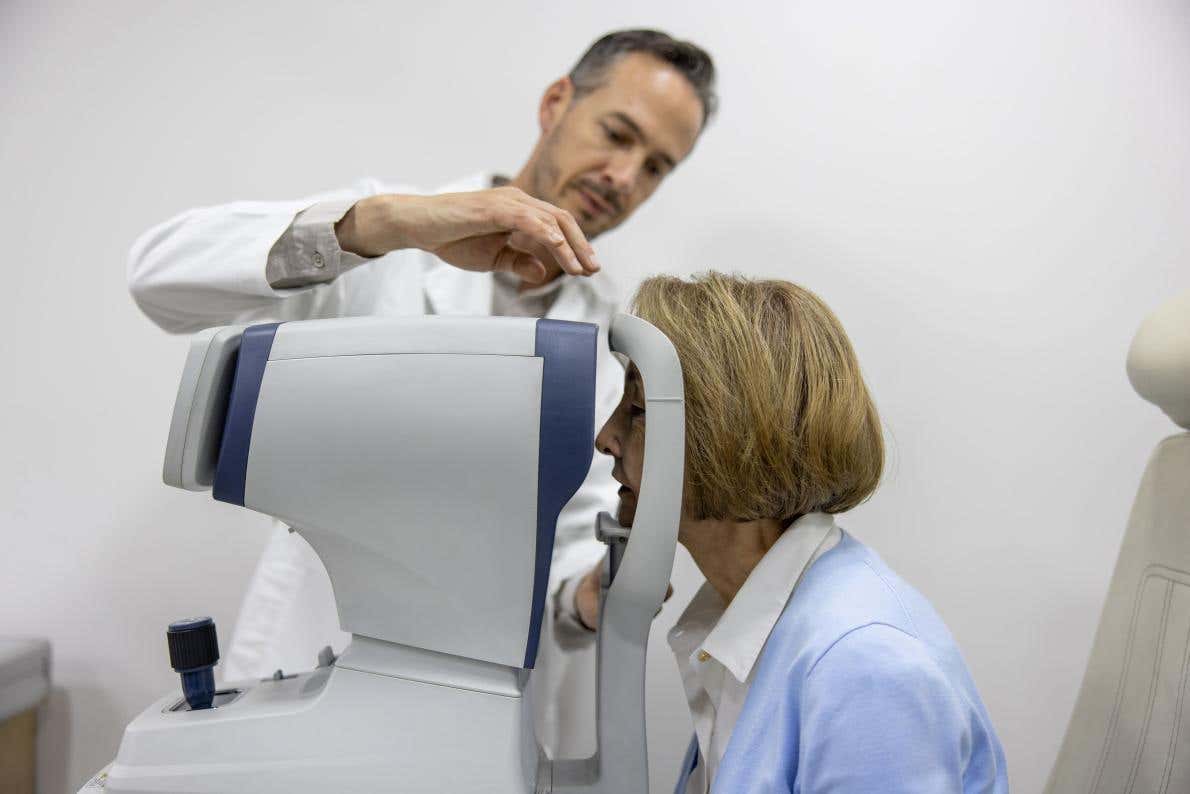Eye scans revolutionize the early detection and monitoring of kidney disease, study finds
3D eye scans can reveal vital clues about kidney health that could help to track the progression of disease, research suggests.

[Dec. 11, 2023: JJ Shavit, The Brighter Side of News]
3D eye scans can reveal vital clues about kidney health that could help to track the progression of disease, research suggests. (CREDIT: Creative Commons)
In a groundbreaking development, 3D eye scans are revealing vital insights into kidney health, potentially revolutionizing the early detection and monitoring of kidney disease. This remarkable advancement comes at a crucial time, as kidney disease often lurks undetected in its initial stages, devoid of any noticeable symptoms.
Researchers assert that this technological breakthrough could facilitate early diagnosis, offering a lifeline for individuals who often remain unaware of their deteriorating kidney health until half of their kidney function has already been compromised.
The intriguing link between the eyes and the kidneys lies in the retina, the delicate layer of tissue at the back of the eye responsible for sensing light and transmitting signals to the brain. Experts have long recognized that microvascular circulation, the flow of blood through the body's tiniest vessels, plays a pivotal role in kidney disease. The retina, uniquely situated for observation, serves as a remarkable window into this crucial physiological process.
Researchers at the University of Edinburgh embarked on a mission to harness the potential of 3D retinal images, captured using a technology called optical coherence tomography (OCT), to identify and predict the progression of kidney disease accurately. OCT scanners, commonly found in optometrist offices, employ light waves to generate cross-sectional images of the retina, enabling a thorough examination of each individual layer in a matter of minutes.
Related Stories
The study scrutinized OCT images from 204 patients at varying stages of kidney disease, including those who had received kidney transplants, in addition to 86 healthy volunteers for comparative analysis. The findings were nothing short of astonishing. Patients afflicted by chronic kidney disease exhibited notably thinner retinas when juxtaposed with their healthy counterparts. Intriguingly, the degree of retinal thinning correlated with the decline in kidney function, providing a tangible link between the two.
Perhaps most promising of all, the thinning of the retinas observed in kidney disease patients was shown to be reversible following a successful kidney transplant. Patients suffering from the most severe form of the disease, after receiving a transplant, experienced a rapid thickening of their retinas, offering tangible proof of the kidneys' profound influence on this ocular parameter.
Kidney disease has become an escalating public health concern, with a growing number of individuals at risk. This ailment frequently ensues as a consequence of underlying conditions such as diabetes, hypertension, and obesity, which place undue stress on the kidneys. The ability to detect and monitor kidney health through regular eye examinations could be a game-changer in preventing the disease from progressing stealthily. Moreover, early detection would empower patients to make lifestyle modifications that mitigate the risk of further health complications.
Optical Coherence Tomography (OCT) image of eye in the patient. (CREDIT: Chaiwut Siriphithakwong / Shutterstock)
The significance of this technological innovation extends beyond the realm of diagnostics. Supported by Heidelberg Engineering's imaging platform, it holds promise in the development of novel drugs for kidney disease. By monitoring changes in the retina, researchers can gain insights into how the kidney responds to potential new treatments, potentially ushering in a new era of therapeutic options.
However, it is worth noting that while this discovery is a remarkable stride forward, further research is imperative. Longer-term clinical trials involving larger groups of patients are essential before this technology can be routinely integrated into medical practice.
The SPECTRALIS® is an expandable diagnostic imaging platform which combines scanning laser fundus imaging with high-resolution OCT. (CREDIT: Heidelberg Engineering)
The implications of this research are profound. In the United Kingdom alone, an estimated 7.2 million people grapple with chronic kidney disease, constituting over 10% of the population. The financial burden on the National Health Service (NHS) is substantial, amounting to £7 billion annually. The potential to mitigate these costs, enhance patient care, and alleviate the suffering of millions cannot be overstated.
The study that underpins this breakthrough has been published in Nature Communications, and its findings promise to reshape the landscape of kidney disease diagnosis and treatment. It is worth noting that this research was made possible through the generous funding of Kidney Research UK and received support from Edinburgh Innovations, the University's commercialization service.
Retinal and nerve fiber layer thickness in health and kidney disease. Scatter dot plots of retinal thickness (A), macular volume (B) and retinal nerve fiber layer thickness. (CREDIT: Nature Communications)
Dr. Neeraj (Bean) Dhaun, a prominent figure in the field of Nephrology and a Professor at the University of Edinburgh's Centre for Cardiovascular Science, expressed optimism about the research's potential impact. Dr. Dhaun emphasized, "We hope that this research, which shows that the eye is a useful window into the kidney, will help identify more people with early kidney disease – providing an opportunity to start treatments before it progresses." His words underscore the transformative potential of this discovery.
Dr. Aisling McMahon, Executive Director of Research and Policy at Kidney Research UK, also commented on the research's significance, saying, "Kidney patients often face invasive procedures to monitor their kidney health, often on top of receiving grueling treatments like dialysis. This fantastic research shows the potential for a far kinder way of monitoring kidney health." Dr. McMahon's words highlight the humane dimension of this innovation, offering hope for a gentler approach to the management of kidney disease.
This discovery promises early diagnosis, improved patient care, and a potential reduction in the financial burden of kidney disease on healthcare systems. While there are still bridges to cross before this technology becomes a routine part of healthcare, the journey has begun, and the destination is one of hope, compassion, and better health for millions.
Note: Materials provided above by The Brighter Side of News. Content may be edited for style and length.
Like these kind of feel good stories? Get the Brighter Side of News' newsletter.



